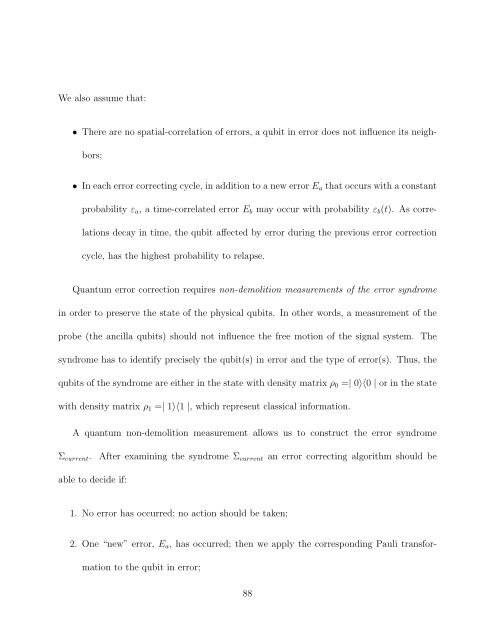t b a b a
t b a b a
t b a b a
You also want an ePaper? Increase the reach of your titles
YUMPU automatically turns print PDFs into web optimized ePapers that Google loves.
We also assume that:<br />
• There are no spatial-correlation of errors, a qubit in error does not influence its neigh-<br />
bors;<br />
• In each error correcting cycle, in addition to a new error Ea that occurs with a constant<br />
probability εa, a time-correlated error Eb may occur with probability εb(t). As corre-<br />
lations decay in time, the qubit affected by error during the previous error correction<br />
cycle, has the highest probability to relapse.<br />
Quantum error correction requires non-demolition measurements of the error syndrome<br />
in order to preserve the state of the physical qubits. In other words, a measurement of the<br />
probe (the ancilla qubits) should not influence the free motion of the signal system. The<br />
syndrome has to identify precisely the qubit(s) in error and the type of error(s). Thus, the<br />
qubits of the syndrome are either in the state with density matrix ρ0 =| 0〉〈0 | or in the state<br />
with density matrix ρ1 =| 1〉〈1 |, which represent classical information.<br />
A quantum non-demolition measurement allows us to construct the error syndrome<br />
Σcurrent. After examining the syndrome Σcurrent an error correcting algorithm should be<br />
able to decide if:<br />
1. No error has occurred; no action should be taken;<br />
2. One “new” error, Ea, has occurred; then we apply the corresponding Pauli transfor-<br />
mation to the qubit in error;<br />
88

















